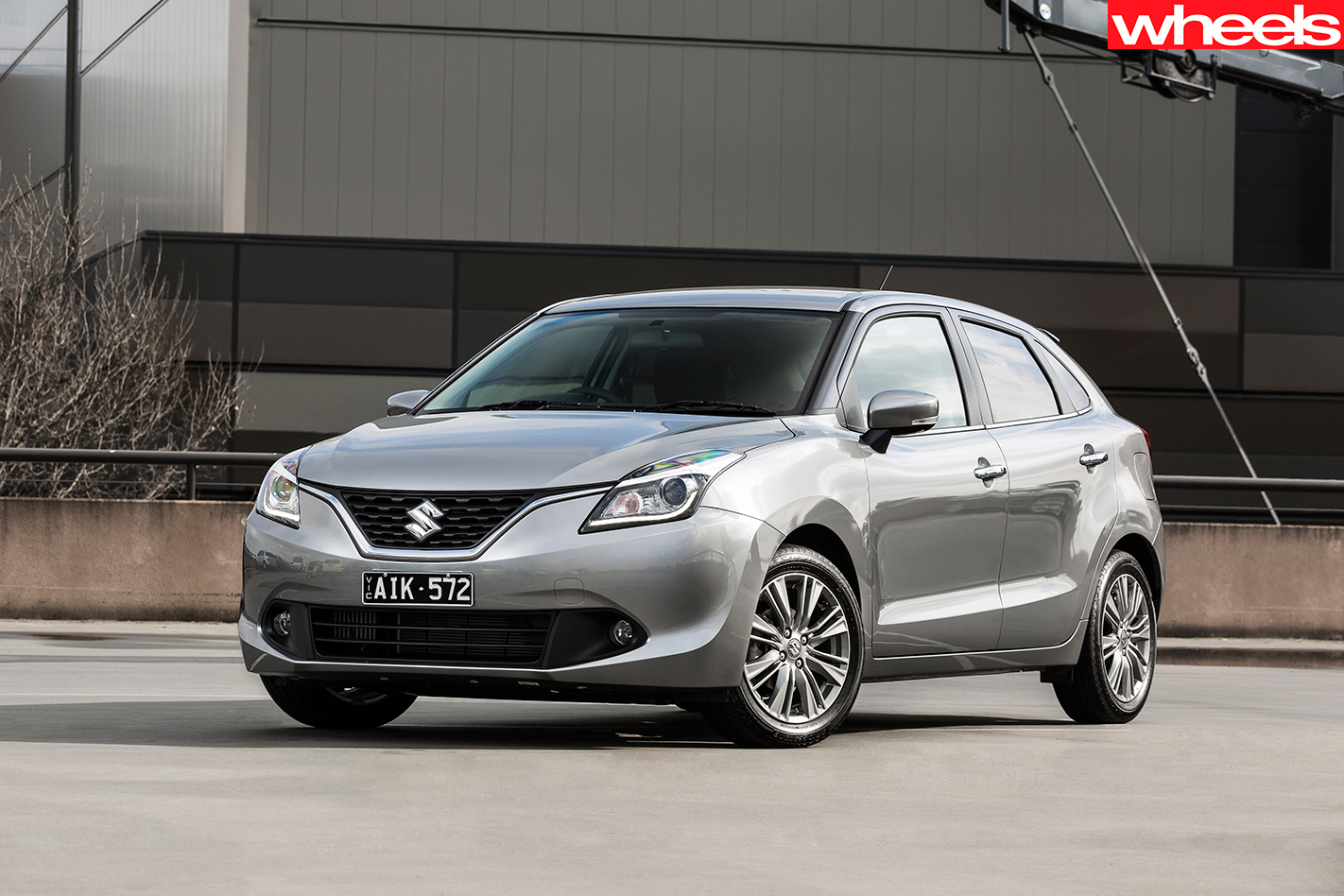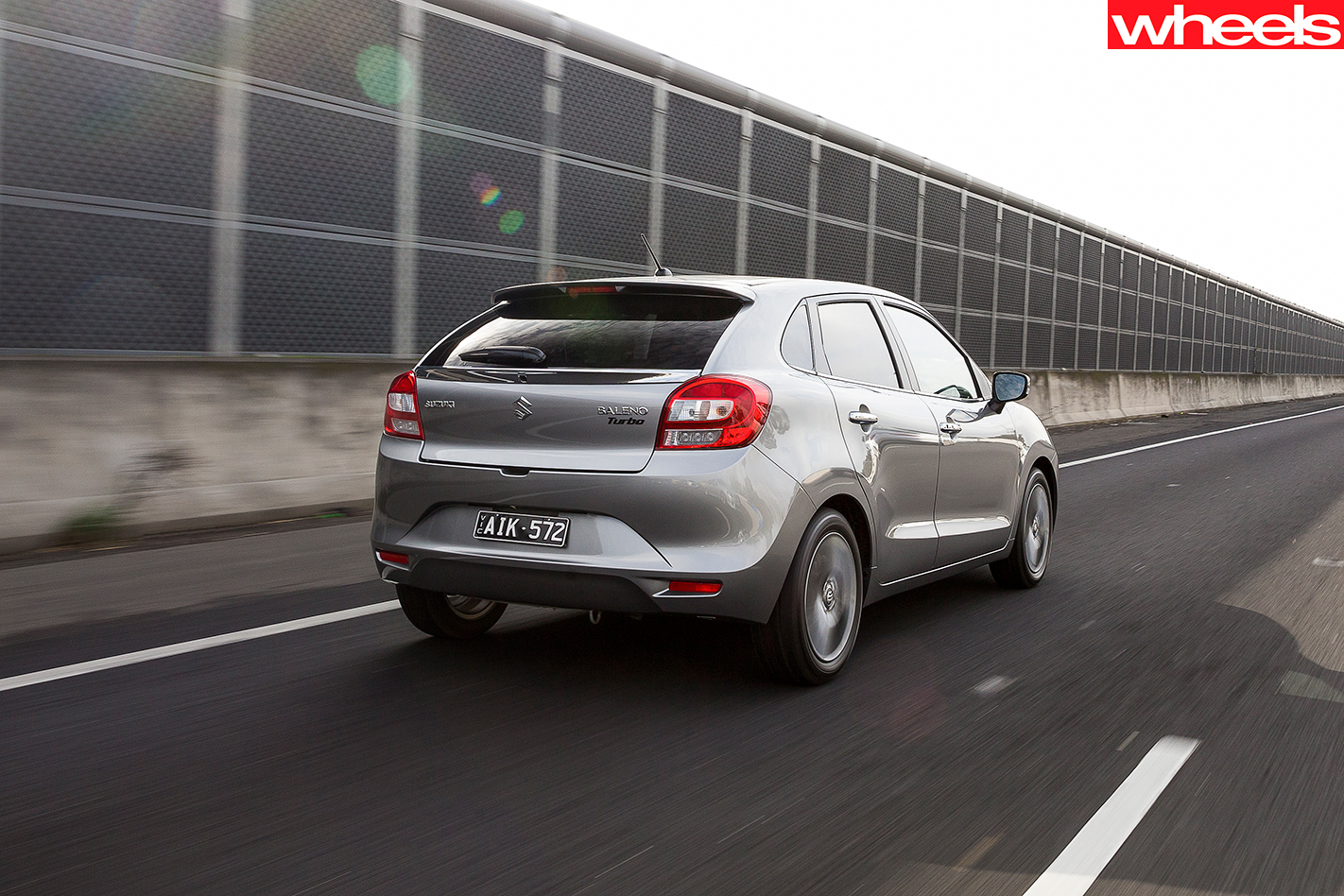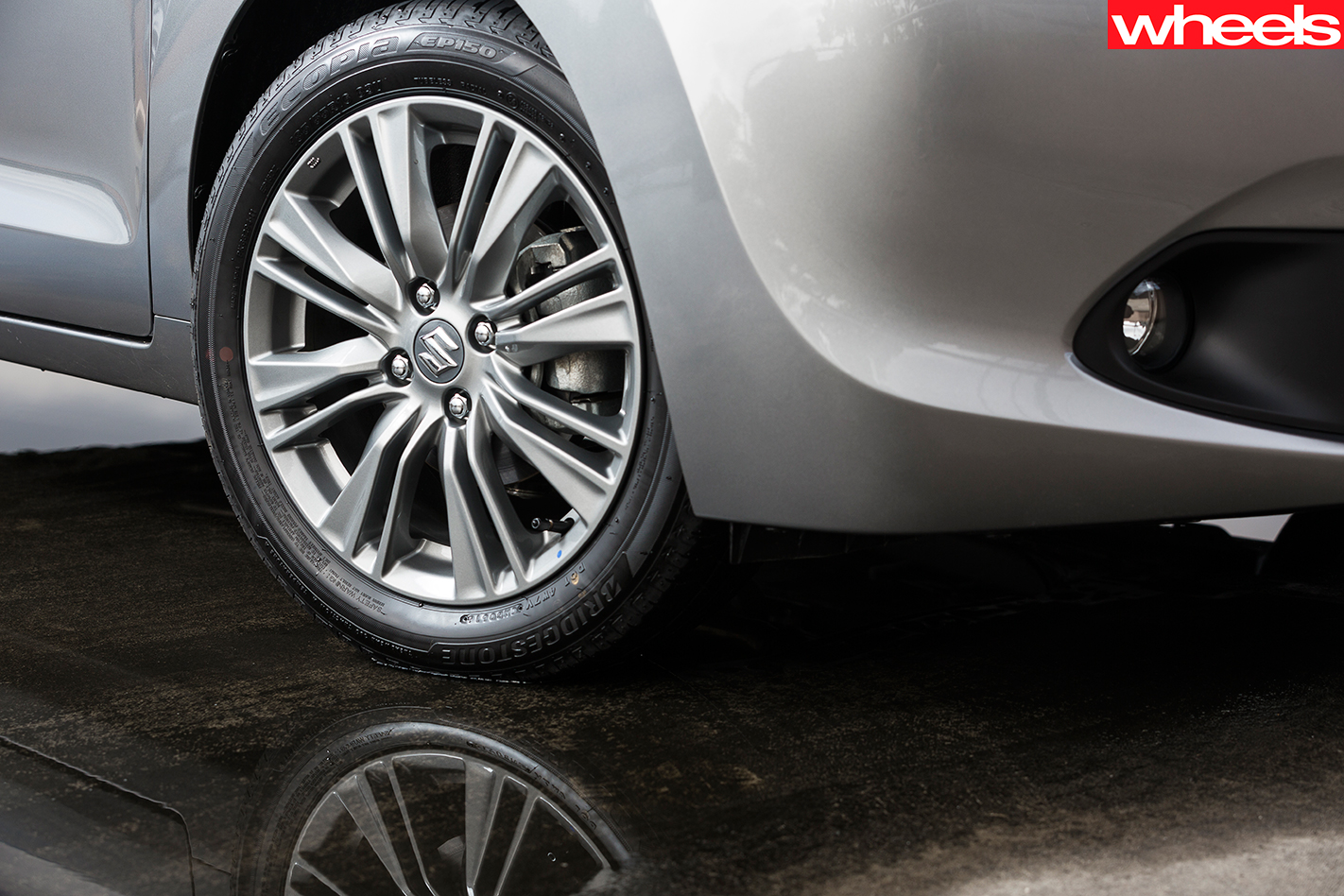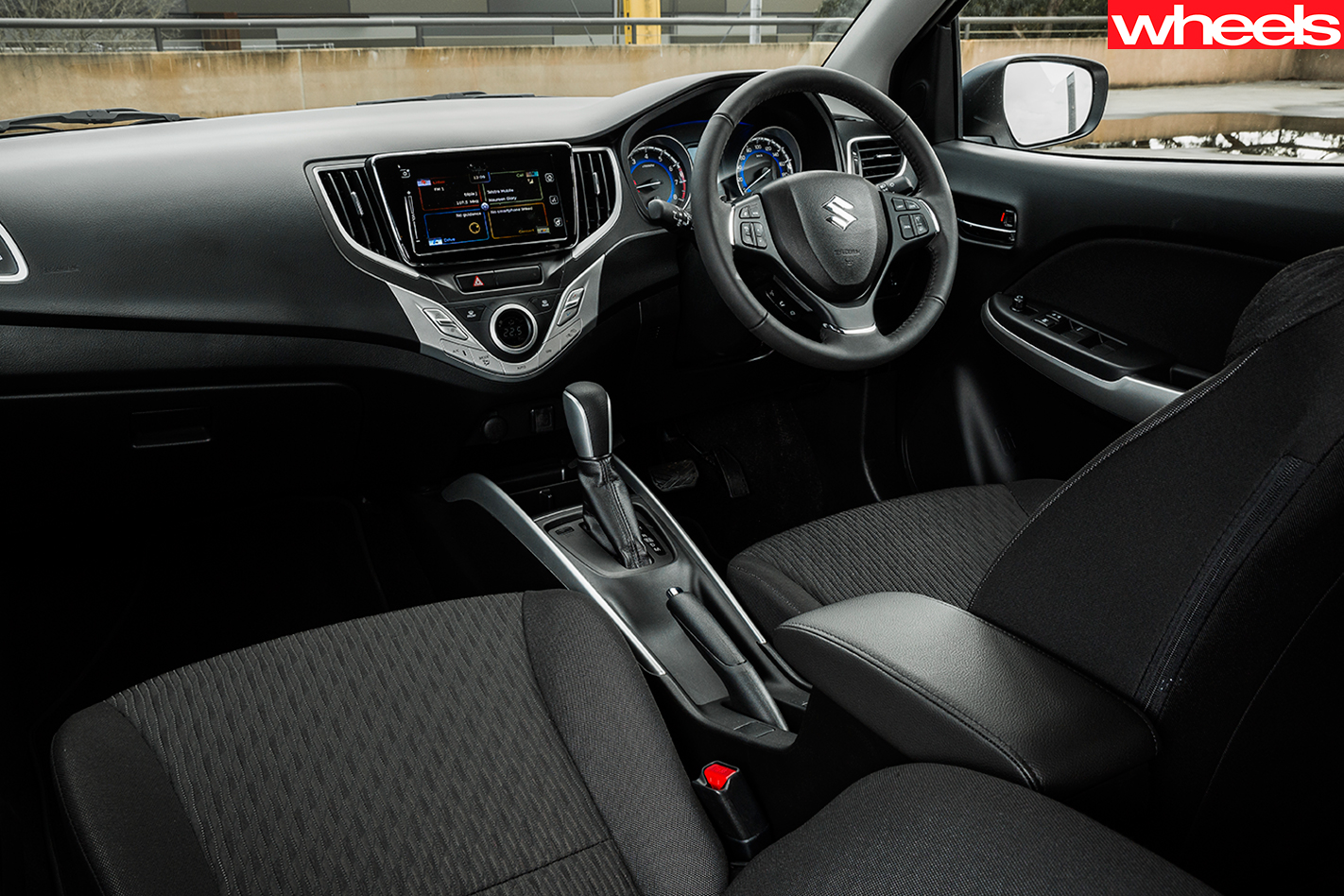WHAT IS IT? The Baleno is an especially roomy five-door five-seater hatchback with a massive boot and high equipment levels, to lure small car buyers into a more compact and economical alternative. So while it’s nearly as practical as a Corolla, the prices are more closely aligned to that of a Mazda 2’s.
WHY WE’RE TESTING IT After competent Suzukis like the Swift, Vitara, and Celerio, we’re expecting big things from the Baleno – especially as it debuts an all-new chassis as well as fresh engine tech in the three-cylinder turbo petrol. Question marks hang over its Euro NCAP safety ratings, but the Indian-built hatch promises value, performance, and outstanding economy.
MAIN RIVALS Ford Fiesta, Volkswagen Polo, Mazda 2, Skoda Rapid, Hyundai i30, Toyota Corolla, Mazda 3, Ford Focus, Holden Cruze, Kia Cerato, Nissan Pulsar, Honda Jazz

PLUS: Performance, economy, packaging, value, ride comfort, handling MINUS: Safety rating questions, no AEB availability, no manual Boosterjet
THE WHEELS REVIEW SUZUKI’S refusal to build a conventional Toyota Corolla competitor is bordering on belligerence.
A world leader in motorcycles, an SUV pioneer, and a city-runabout superpower, the Japanese brand has never produced a regularly sized small car. Ever. Oddballs like the Liana and SX4 were either too compact or too crossover-ish to cut it.
Suzuki argues that the latest Baleno – from $16,990 driveaway for the GL 1.4 manual, just $1K more for the four-speed auto, and $23K driveaway for the GLX 1.0 turbo six-speed auto – will snare Hyundai i30 buyers anyway because the Indian-built hatch is big where it matters – inside – yet small enough to make a difference – namely to your hip-pocket.
So while overall length and wheelbase are actually shorter than a Mazda 2’s (never mind a 3’s), the numbers reveal C-segment-esque legroom and cargo capacity, thanks to extra girth, wider tracks, cab-forward packaging, and stunted overhangs compared to the supermini from Hiroshima. It’s also around 100kg lighter. Impressive.

Additionally, the lofty rear seat area offers exceptional room for knees, legs, and feet, though taller scalps may scrape the roof-lining. All outboard seating is supportive despite short cushions, with a well-raked backrest, while the middle position isn’t purgatory. And the boot is deeper than the mess Britain is in right now, due in part to a space-saver spare as well as space-saving torsion beam rear suspension.
Our Baleno was the GLX, and against better bigger hatches like the Mazda 3, things become complicated. The Suzuki’s overall presentation simply isn’t in the same league, undermined by cheesy ‘90s trip computer graphics, no digital speedo, a clammy plastic steering wheel with fake leather stitching, and charmless cheapo plastics.
Yet the 82kW/160Nm 1.0-litre turbo triple is actually terrific. Aided by an excellent power-to-weight ratio and an intelligently calibrated six-speed torque-converter auto, the so-called Boosterjet is brisk off the mark, pulls quite spiritedly through the rev range, and sounds respectfully refined. Note: it does desire premium unleaded brew.

As it stands, however, the Baleno’s steering is far from that, feeling oddly remote and low geared, sometimes requiring two bites of a turn to literally avoid understeering out of a roundabout. Quite the opposite, then, to Suzuki’s other B-segment belter, the nervously sharp Swift.
Clearly, the company has tuned the suspension for comfort instead, resulting in long spring travel (great over speed bumps) and quite cushy dampening. But smaller-frequency rough-stuff compliance isn’t great. Body movement is noticeable over undulations at speed, with the springs occasionally hitting their bump stops – particularly with more than two people on board.
Yet this Euro-honed chassis, fundamentally, feels sorted, with high levels of grip, quite unflappable handling, and steering that’s both planted and kickback-free – though the ESC intervention is annoyingly eager to cut power.

Perhaps Suzuki’s relative inexperience in this segment is showing.
SPECS Model: Suzuki Baleno GLX Turbo Engine: 998cc 3-cyl, dohc, 12v turbo Max power: 82kW @ 55500rpm Max torque: 160Nm @ 1500-4000rpm Transmission: 6-speed auto Weight: 950kg 0-100km/h: 11.0sec Fuel economy: 5.2L/100km Price: $22,900 (driveaway) On sale: Now





